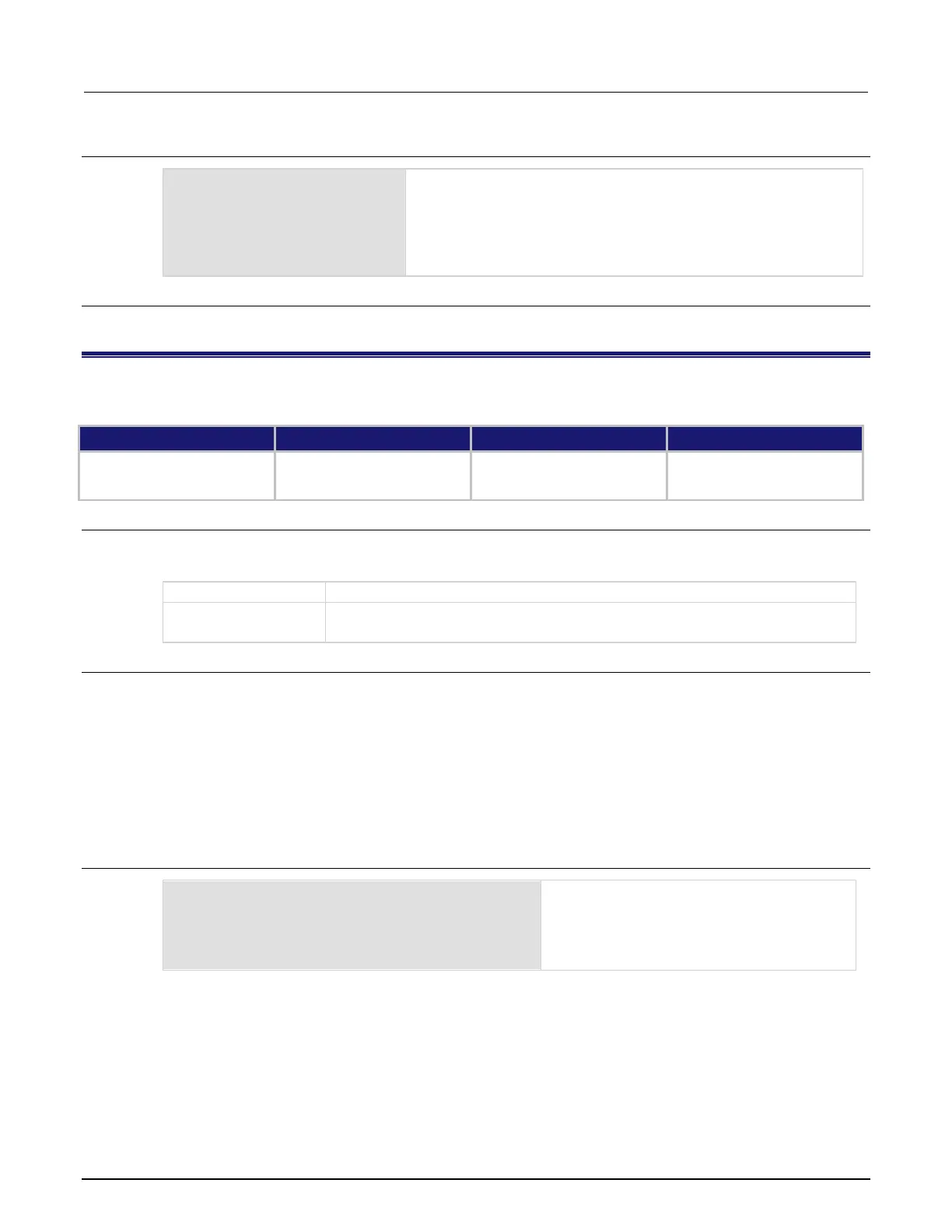6: SCPI command reference Model DMM7510 7½ Digit Graphical Sampling Multimeter Referen
6-242 DMM7510-901-01 Rev. B / May 2015
Example
DIG:LINE1:MODE TRIG,IN
DIG:LINE2:MODE TRIG,OUT
TRIG:TIM1:DEL 35e-3
TRIG:TIM1:STAR:STIM DIG1
Reset the instrument to default settings. Set digital I/O line 1 for use as
a trigger input.
Set digital I/O line 2 for use as a trigger output.
Set timer 1 to delay 35 ms.
Set timer 1 to start delaying once the digital I/O 1 event is detected.
Set digital I/O line 2 to output a pulse once the timer 1 event is detected.
Also see
None
:TRIGger:TIMer<n>:STATe
This command enables the trigger timer.
Type Affected by Where saved Default value
Instrument reset
Usage
:TRIGger:TIMer<n>:STATe <state>
:TRIGger:TIMer<n>:STATe?
Trigger timer number (1 to 4)
Disable the trigger timer: OFF or 0
Enable the trigger timer: ON or 1
Details
When this command is set to on, the timer performs the delay operation.
When this command is set to off, there is no timer on the delay operation.
You must enable a timer before it can use the delay settings or the alarm configuration. For expected
results from the timer, it is best to disable the timer before changing a timer setting, such as delay or
start seconds.
To use the timer as a simple delay or pulse generator with digital I/O lines, make sure the timer start
time in seconds and fractional seconds is configured for a time in the past. To use the timer as an
alarm, configure the timer start time in seconds and fractional seconds for the desired alarm time.
Example 1
TRIG:DIG3:OUT:STIM TIM2
SYSTem:TIME?
TRIG:TIM2:START:SECONDS <current time> + 60
To configure timer 2 for an alarm to fire 1 minute
from now and output a pulse on digital I/O line 3,
query to get the current time. Add 60 s to that
value and use that to configure the start
seconds. Enable the timer.
